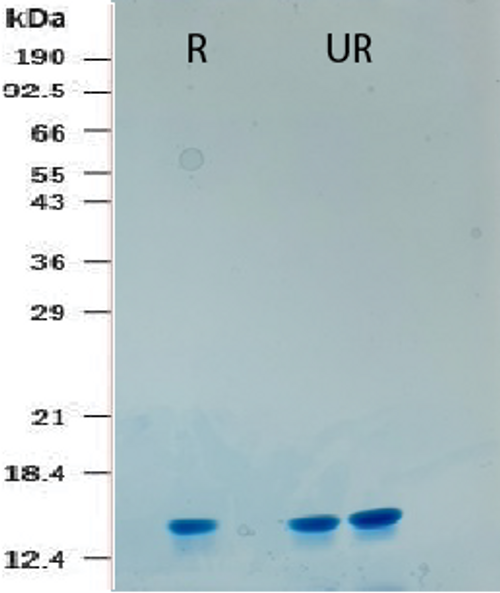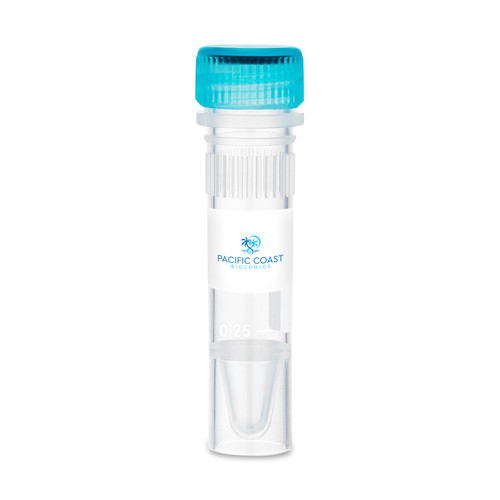NT-3, a neurotrophic factor, shares structural kinship with β-NGF, BDNF, and NT-4, all part of the cysteine-knot family of growth factors known for their stable dimeric structures. It's predominantly expressed by neurons in the central nervous system and activates signaling pathways through the trk receptors. NT-3 plays a vital role in promoting the growth and survival of both nerve cells and glial cells. Notably, the amino acid sequences of Human, murine, and rat NT-3 are identical. Recombinant Human NT-3 forms a noncovalently linked homodimer consisting of two 13.6 kDa polypeptide monomers, totaling 240 amino acid residues.
|
Product Specifications
|
|
| Species | Human |
| Published species |
Human, Mouse, Rat
|
| Expression System | E. coli |
| Amino acid sequence |
MYAEHKSHRG EYSVCDSESL WVTDKSSAID IRGHQVTVLG EIKTGNSPVK QYFYETRCKE ARPVKNGCRG IDDKHWNSQC KTSQTYVRAL TSENNKLVGW RWIRIDTSCV CALSRKIGRT
|
| Molecular weight | 27.2 kDa |
| Class | Recombinant |
| Type | Protein |
| Purity |
≥ 98% by SDS-PAGE gel and HPLC analyses.
|
| Endotoxin concentration | <0.1 EU/µg |
| Activity |
Determined by its ability to bind recombinant human TrkB Fc Chimera in a functional ELISA.
|
| Conjugate | Unconjugated |
| Form | Lyophilized |
| Contains |
no preservative
|
| Storage conditions | -20°C |
CAUTION
For Research Use Only. Not for use in diagnostic procedures.















